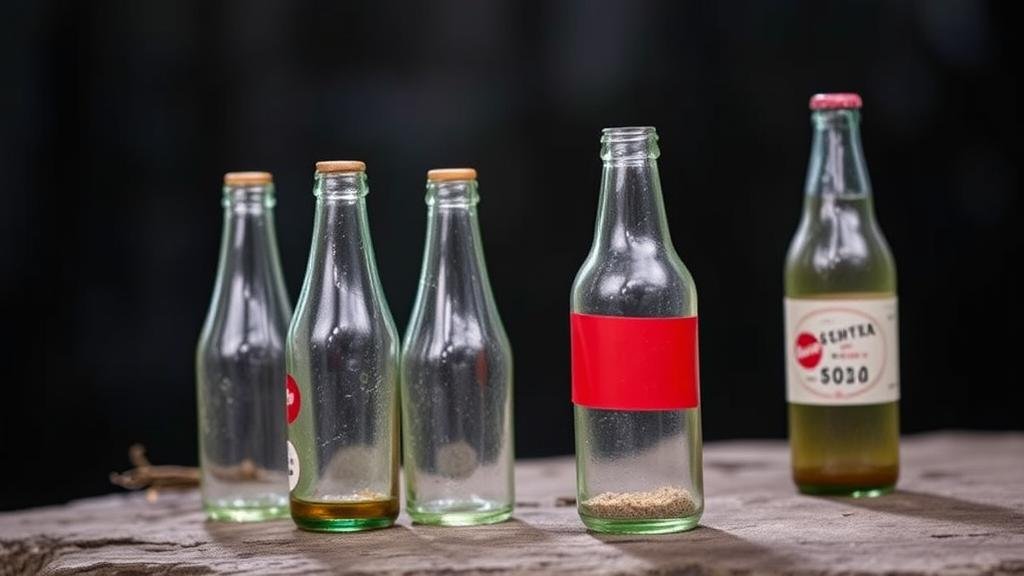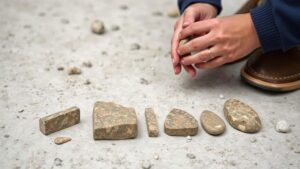Hunting for Collectible Soda Bottles in Old Picnic Areas
Hunting for Collectible Soda Bottles in Old Picnic Areas
The practice of collecting vintage soda bottles can be both a lucrative hobby and an exciting exploration into the history of consumer goods. Old picnic areas, often overlooked, serve as treasure troves for collectors seeking rare and valuable finds. This article delves into the methodologies, historical contexts, and best practices for successfully hunting collectible soda bottles in these nostalgic locales.
The Allure of Vintage Soda Bottles
Collecting vintage soda bottles encompasses a variety of interests, from nostalgia and design appreciation to historical significance. age, rarity, and condition of bottles greatly impact their value in the collectors market.
- Some bottles can fetch hundreds or even thousands of dollars, especially if they are limited editions or associated with significant brands.
- The rise of the soda bottling industry in the late 19th and early 20th centuries led to a wide array of unique designs, colors, and shapes that entice collectors.
Why Old Picnic Areas?
Old picnic spots, particularly those frequented in the mid-20th century, hold immense potential for bottle collectors due to the sheer volume of waste produced during outings. Beverage containers like soda bottles were often discarded rather than recycled. These forgotten sites can yield several collectible finds due to several factors:
- People historically used picnic areas as informal gathering spots, leading to a higher likelihood of forgotten items.
- Natural erosion and wildlife may uncover buried treasures, including old soda bottles, over time.
Researching Locations
Before embarking on a collection hunt, thorough research is paramount. Identifying old picnic areas entails more than just selecting a random spot in a local park. Here are steps to consider:
- Consult historical maps and local archives. Websites such as the U.S. Geological Survey and local historical societies can provide insights into areas that were popular for picnicking.
- Engage with local collectors and history enthusiasts through forums or social media groups. Knowledge sharing can lead you to undiscovered hotspots.
Tools and Techniques for Collecting
Having the right tools is essential for an effective hunt. Commonly used items are:
- A sturdy shovel or trowel for digging
- An archaeologists brush for detailing and cleaning finds
- Protective gloves and bags to take your treasures home safely
Collecting involves not only physical effort but also keen observation. Look for telltale signs of disposal areas, such as changes in vegetation or scattered debris. Use a systematic approach to search, focusing on regions beneath old trees, bushes, and the edges of clearer areas where picnics might have occurred.
Legal and Ethical Considerations
Before commencing your quest, it is vital to understand the legal ramifications of bottle hunting:
- Always seek permission before digging in private or protected areas. Trespassing can lead to legal repercussions.
- Respect nature and historical sites. Ensure that your excavations do not disrupt local flora or fauna.
Valuation of Collectible Bottles
Upon discovery, determining the value of your soda bottles requires a mix of research and assessment:
- The manufacturer’s embossing, color, and design play a critical role in determining a bottle’s worth.
- Use online databases and auction sites to gauge current market trends.
For example, a 1915 Coca-Cola bottle can fetch prices as high as $3,500, whereas a common brand from the 1970s may only yield about $10. Assessing condition is crucial–bottles in mint condition are significantly more valuable than those with chips or discoloration.
Real-World Applications and Case Studies
Numerous collectors have successfully turned their passion into profitable ventures. A notable example is the case of a collector who discovered an entire cache of bottles in an abandoned picnic area in the 1980s. Among them were limited edition 1930s soda bottles that were later auctioned for substantial sums. This illustrates not only the financial potential but also the historical value of such artifacts.
Actionable Takeaways
To wrap up, hunting for collectible soda bottles in old picnic areas offers both a rewarding hobby and an opportunity to engage with history. To maximize your chances of success:
- Conduct thorough research to identify promising locales.
- Equip yourself with the right tools and techniques for effective digging and analysis.
- Adhere to legal and ethical norms to preserve heritage and nature.
These steps, combined with patience and perseverance, will enhance your journey as a collector and historian, allowing you to unearth forgotten relics of the past.



